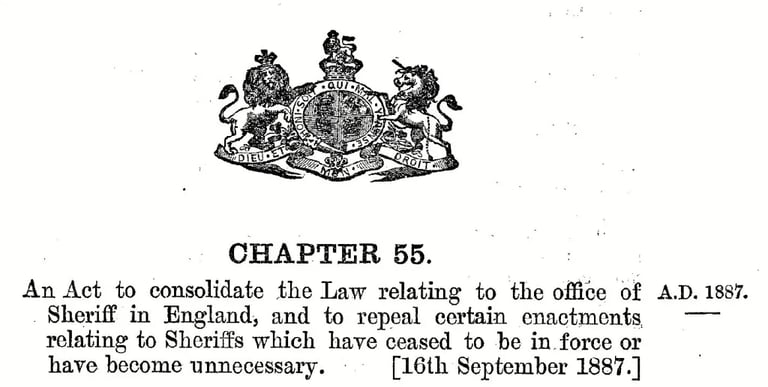Appointing the High Sheriff
Each year, three individuals are nominated for the role of High Sheriff of Oxfordshire. These nominations are considered at a formal meeting of the Lords of the Council in the King’s Bench Division of the High Court of Justice, presided over by the Lord Chief Justice on 12th November. The process is managed by the Presiding Judge of the Circuit and the Privy Council, with the final decision made by The Sovereign in Council.
The appointment follows a long-standing tradition known as ‘pricking’, where The Sovereign selects the High Sheriff by marking their name with a bodkin – a custom dating back to at least the 16th century.
There are two stories about how this tradition began. One legend has it that Queen Elizabeth I, when asked to mark the names of the new High Sheriffs, was in the middle of her embroidery and could not find a pen—so she simply used her bodkin, a sharp needle-like tool, to prick the names instead. The custom is said to have continued ever since.
Another explanation offers a more practical reasoning. The list of nominees has traditionally been written on vellum, a durable parchment made from calfskin. Since ink could fade or even be erased, pricking the vellum with a bodkin provided a permanent and irreversible way to confirm the appointments. Given that the role of High Sheriff was not always a welcome honour, ensuring the appointment could not be undone may have been a deliberate safeguard.
Who Can Be High Sheriff?
The Sheriffs Act of 1887 sets out who can – and cannot – be nominated. The role is strictly non-political, so Members of Parliament, Peers, and those holding certain public offices are not eligible. This includes judges, civil servants, post office employees, and serving military officers on full pay.
The Formal Appointment
Once appointed, a Warrant of Appointment is issued by the Clerk of the Privy Council. It follows a historic format, for example:
‘WHEREAS HIS MAJESTY was this day pleased, by and with the advice of HIS PRIVY COUNCIL, to nominate you for, and appoint you to be HIGH SHERIFF of the COUNTY OF OXFORDSHIRE.
During HIS MAJESTY'S PLEASURE: These are therefore to require you to take the Custody and Charge of Oxfordshire, and duly to perform the duties of HIGH SHERIFF thereof during HIS MAJESTY'S PLEASURE, whereof you are duly to answer according to law.'
The new High Sheriff takes office in April, making a formal declaration before a High Court Judge or Justice of the Peace. The role is held for one year, though in rare cases, an outgoing High Sheriff may need to stay on until a successor is confirmed.
Choosing a Future High Sheriff
It is the duty of the serving High Sheriff to help identify a successor, who will take office three years later. In Oxfordshire, this process is supported by a consultative panel, made up of independent members and representatives from the Lieutenancy, the Judiciary, the Police, and other key sectors. The panel ensures that candidates have the experience, commitment, and public spirit needed for this demanding yet rewarding role.
Nominations for the year beginning April 2029 are now open and further details can be found here.


The Oxfordshire Shrievalty
Championing justice and community across Oxfordshire
© 2025. All rights reserved.
